Vidhurashwatha is a small village famous for Ashwatha tree (banyan, peepal, or fig tree), believed to be planted by Vidhura during the Mahabharatha times. Vidhurashwatha is also famous as the “Jallianwala Bagh of South India.”
Vidhurashwatha and Mahabharatha
After the Kurukshetra war, Vidhura, one of the central characters in the Mahabharata, travelled across the subcontinent to attain salvation, based on advice from Lord Krishna. He arrived at this place and stayed in the ashram of sage Maithreya and prayed on the banks of the river Uttara Pinakini. Once while offering his morning prayers, he saw a sapling of Ashwatha tree floating in the river. He planted it on the banks of the river and worshipped with great devotion. Pleased by his devotion, Brahma, Vishnu, and Shiva appeared before him and blessed with salvation. As Vidhura planted the Ashwatha tree and attained salvation here, this place got its name Vidurashwatha. This Ashwatha tree fell sometime early around 2001, however, a part of the trunk is still preserved.
There is a temple dedicated to Brahma, Vishnu, and Shiva and the Aswatha tree is believed to represent these three Lords by the three parts of the tree: bottom portion including roots by Brahma, middle portion (trunk) by Vishnu, and the top portion (branches, leaves) of the tree by Shiva. An inscription in Kannada about this can be found on the temple wall.
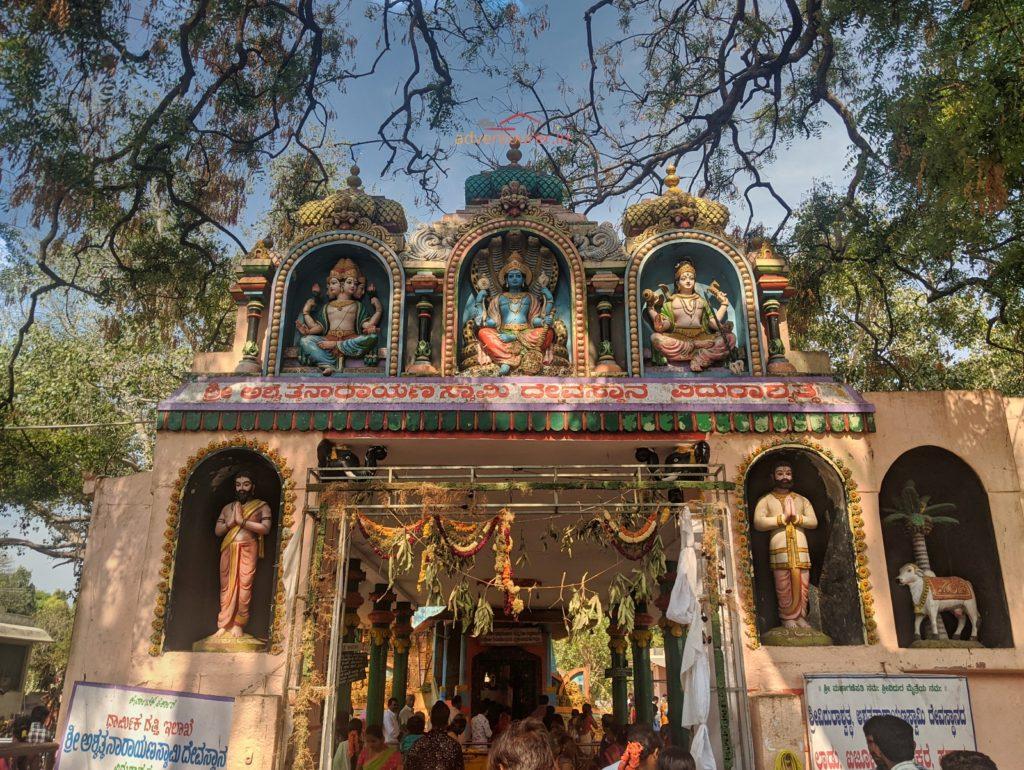
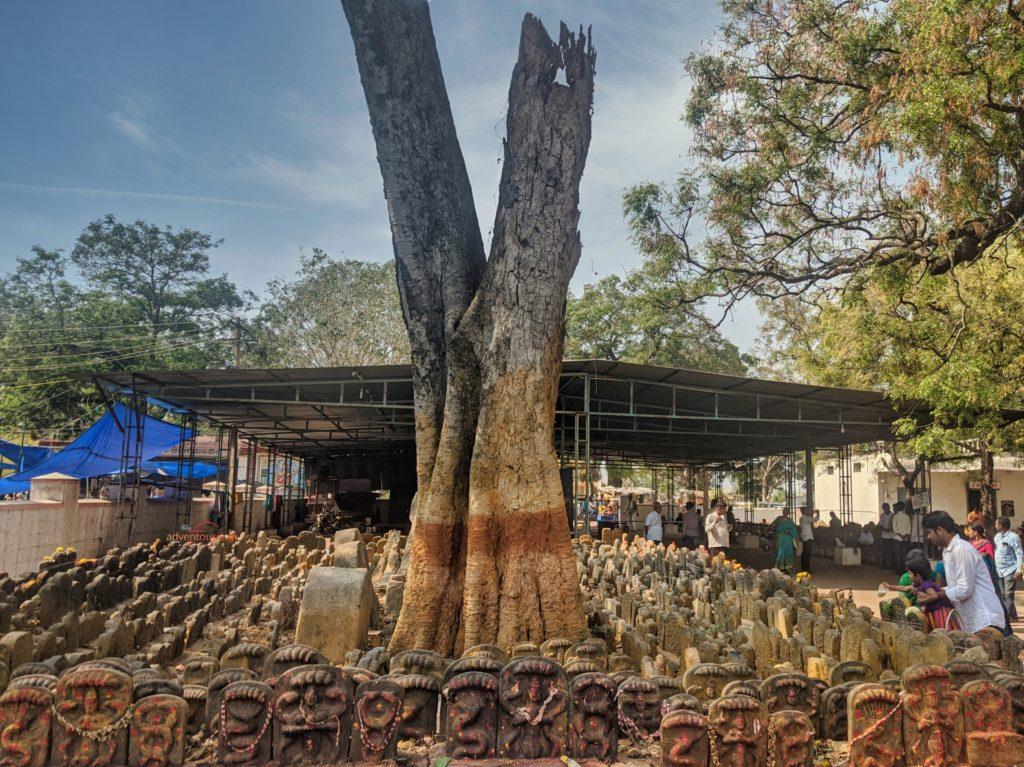
Worshiping Naga
The Ashwatha tree is considered auspicious. In addition to few temples below the vast branches of the tree, Nagaprathista (installing stone idols of snake god–Naga) is done under the Ashwatha tree. You can see thousands of stone idols of Nagadevatha.
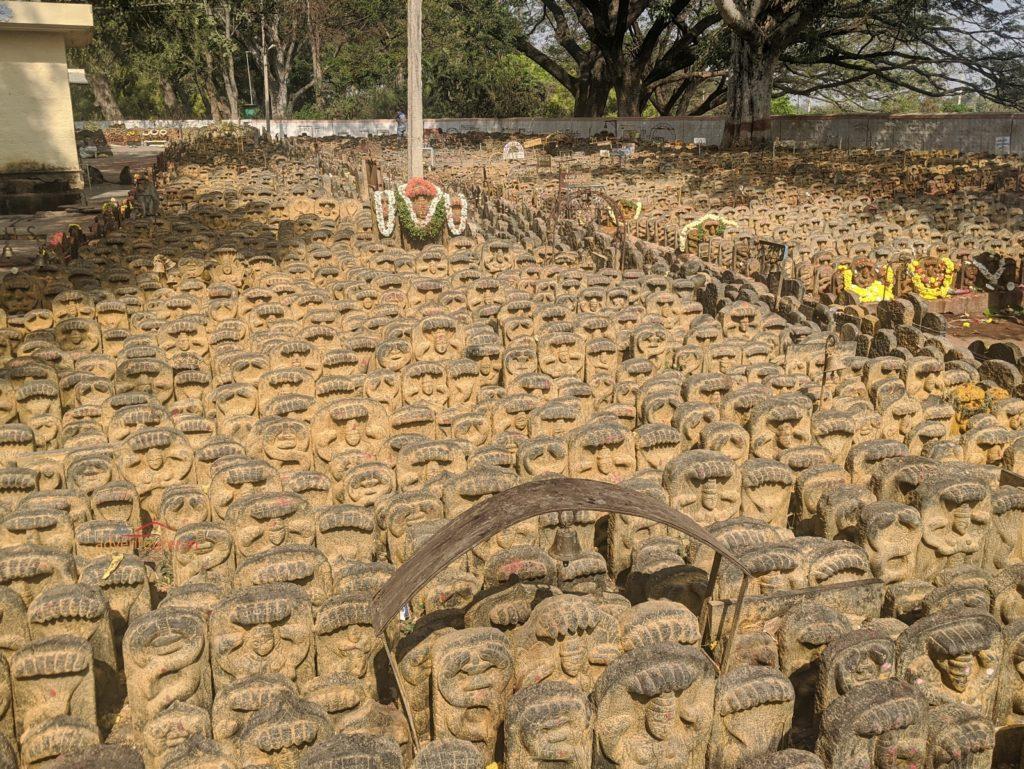
Jallianwala Bagh of South India
Vidurashwatha is also known as the “Jallianwala Bagh of South India”. On April 25, 1938, a group of villagers congregated to organize satyagraha, as part of the freedom struggle of India. The police fired indiscriminately at the group, resulting in the death of around 35 people. (This is similar to the incident incident on April 13, 1919, in which British troops fired on a large crowd of unarmed Indians in an open space known as the Jallianwala Bagh in Amritsar, Punjab, killing 547 people and injuring many others.)
A memorial was built in 1973 at this place as a respect to the martyred. The memorial includes stone pillar with the names of the martyred freedom fighters engraved on it. A garden and a building were added later as part of the memorial.
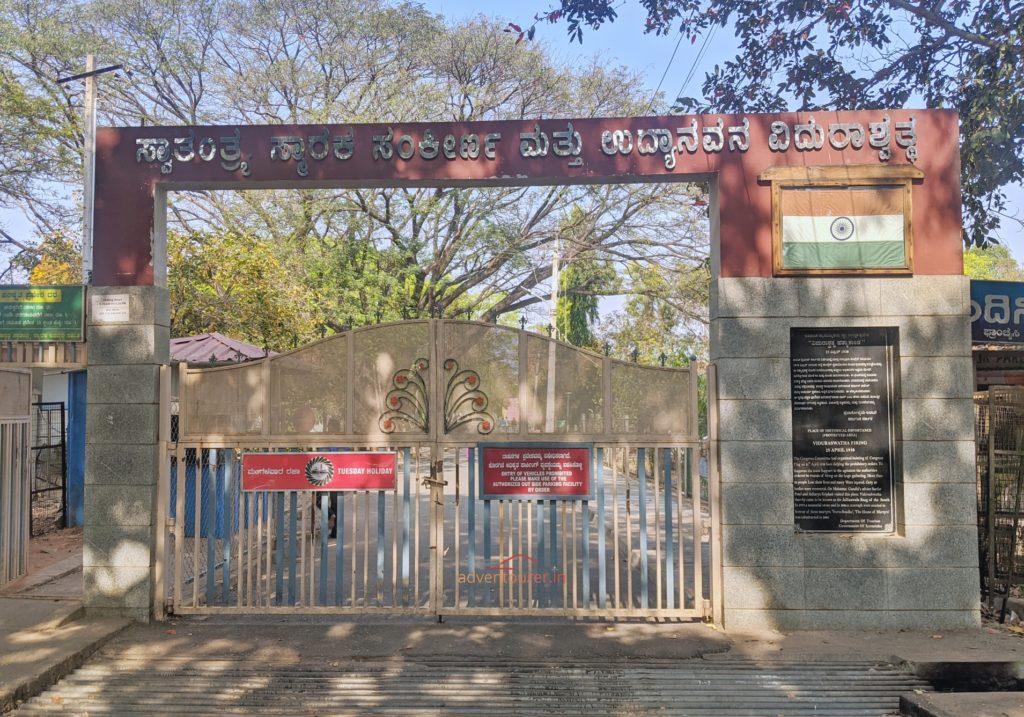
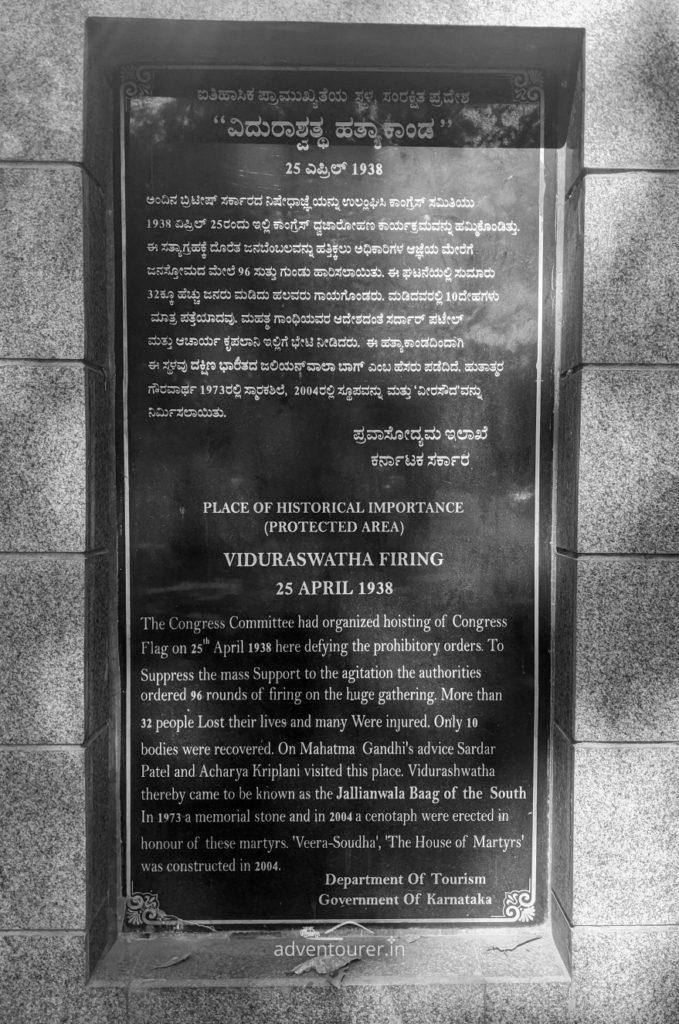
Explore Vidurashwatha
Vidhurashwatha is about 85 kms from Bangalore, on the Bangalore-Hindupur highway. You can comfortably do a one-day trip to this and nearby places from Bangalore.
Location marker on Google map: https://goo.gl/maps/MYgLhv8uk3rMfJL48
How to reach
Vidhurashwatha is about 85 kms from Bangalore, on the Bangalore-Hindupur highway.
By car: Traveling by car is more convenient as you can cover other places of interest nearby/on the way. Travel on the Bangalore-Hindupur highway, turn left at Vidhurashwatha and continue on Vidhurashwatha temple road for about 1.5 kms. Parking is available near the temple.
By bus: There are frequent bus services to Gouribidanur and Hindupur from Bangalore and regular services from other parts of Karnataka and Andhra Pradesh. From Gouribidanur/Hindupur, change bus or take auto rikshaw to reach Vidhurashwatha. Can also get down at Vidhurashwatha village on the highway and take auto rikshaw to reach the temple.
By train: There are regular train services to Gouribidanur and Hindupur from Bangalore. From here, board a bus or take auto rikshaw to reach Vidhurashwatha. There is a railway station at Vidhurashwatha, about 1 km from the temple. Check on the trains stopping at this station.
Quick tips
Start early in the morning and you can cover Ghati Subramanya and Lepakshi as a day trip.
Lepakshi and Vidurashwatha are small villages. There are small stalls with snacks and food items. Best is to carry your own food or eat at Gowribidanur/Doddaballapura/Hindupur (if visiting Lepakshi, or at many restaurants/dhabas along with Bangalore-Hyderabad highway on return from Lepakshi).
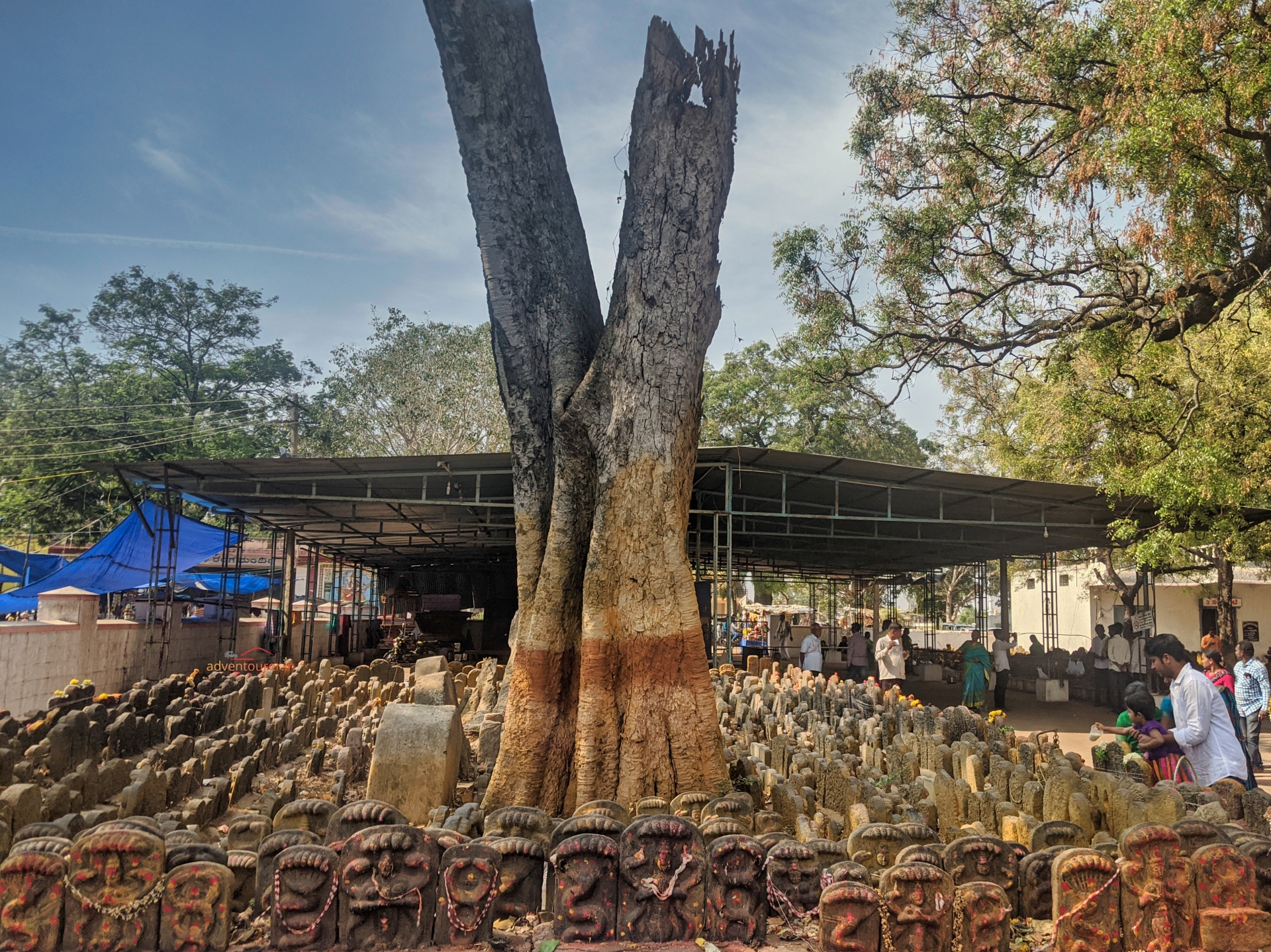
1 thought on “Vidhurashwatha – connecting Mahabharatha and freedom movement of India”